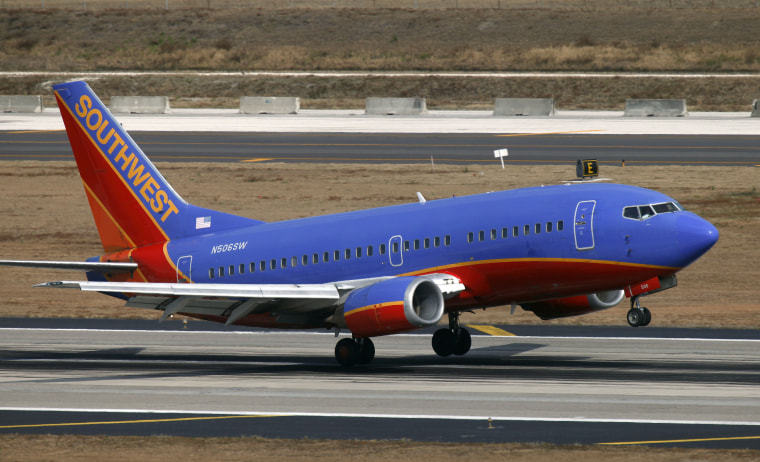Enjoyed that smooth landing? Well, your pilot may have had a little help.
This week, Southwest Airlines, which flies more passengers worldwide than any other carrier, began satellite-assisted runway approaches, part of an ongoing effort to upgrade the nation's skyways in a project known as NextGen.
The switchover from ground- to satellite-based landings is costing Southwest $175 million, but it expects to recoup its investment, plus make money, by spending less on fuel.
Using Global Positioning System satellites for navigation, rather than ground-based radio signals, pilots will be making more precise approaches to runways and spending less time waiting for clearances at the nation's increasingly congested airports.
The Federal Aviation Administration, NASA, Homeland Security and other agencies have been working for several years to upgrade the national airspace, rolling out programs and technologies in phases over the past few years.
Pilot projects in Alaska, Louisville, Ky., Philadelphia and over the Gulf of Mexico have enabled air traffic controllers to keep tabs on planes via GPS satellites, rather than radars, which degrade over distance, cannot penetrate mountains and aren't available over open ocean.
Southwest's implementation of what is called Required Navigation Performance, or RNP routes, allows specially equipped aircraft to make a more direct approach to a landing strip rather than the "staircase-style" descent in practice today, Paul Takemoto, a spokesman for the FAA, told Discovery News.
"If you're using ground-based navigation aids, your descent will look like a staircase. You have to request clearance each time you step down to a lower altitude and each time you have to throttle back your engines. That wastes fuel," Takemoto said.
The satellite-assisted landings will let pilots descend in a much straighter line, without having to throttle back, saving fuel, cutting noise and reducing environmental impacts.
Takemoto said the FAA is "working feverishly" to lay out new approach and landing routes for RNP-equipped aircraft.
Delta, United and Alaska airlines also have been phasing in various aspects of the NextGen system, which should be fully in place by 2020.
NextGen work has been under way since the late 1990s, following a significant increase in passenger air travel after the industry's deregulation in the 1970s, said Steve Howell, head of public policy with the American Institute of Aeronautics and Astronautics, a Virginia-based trade organization.
"The biggest contribution that Southwest's program makes is that it provides a testbed," Howell said. "It gives you some significant feedback on how it's being implemented and where your successes and your challenges are."
"We think it's the future," Southwest spokeswoman Marilee McInnis told Discovery News. "We think RNP will be the cornerstone of NextGen and we want to take advantage of all the benefits that it can provide."
The system will not replace traditional radar-based navigation, which will be available in case of satellite outages or other issues, nor will it replace piloted landings.
"Our pilots will still be landing the planes. The only thing that's changing is the way (s)he's receiving the information," McInnis added.
